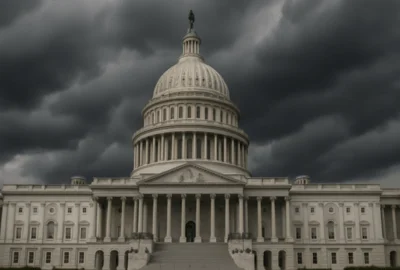Commerce Secretary John Bryson Remarks at Manufacturing Conference (Rochester Institute of Technology), Rochester, New York Thank you, Senator Gillibrand for that kind introduction. And thank you for inviting me here today. You have always been a great partner to the Commerce Department and a strong advocate for businesses and jobs in Upstate New York. Thank you for everything you do for this state and for our country.
I also want to recognize Congresswoman Slaughter whose Director of Economic Development is here today. She helped push legislation to ensure that manufacturers through the Commerce Department can challenge unfairly subsidized products that enter the U.S.
We also have Mayor Tom Richards, City Council President Lovely Warren, and other members of your City Council.
I also want to recognize Phil Singerman and Matt Erskine, both from the Commerce Department, who will be on the panels today.
Finally, I want to thank RIT’s President Bill Destler. What a beautiful campus.
I understand that RIT is known as the “Innovation University.” In fact, we are in the “Center for Student Innovation.” It’s true that Rochester has been a hub for innovation over the years: Throughout this region, everyone is working together to build on your strengths here in upstate New York: So the question is, How do we build on that momentum? This morning, I’d like to mention four areas where we should focus: manufacturing, exporting, investment, and innovation.
First, manufacturing. I lead the administration’s efforts across the federal government in manufacturing. The president himself has been driving home the importance of the U.S. manufacturing base.
There’s good reason for that. About 70 percent of America’s private sector R&D and about 90 percent of our patents are in manufacturing. So, strengthening this sector is essential to our long-term growth.
Already, we are seeing a comeback of sorts. After a decade in which we lost nearly six million manufacturing jobs, we’ve now added nearly half a million in the past 25 months.. Over 120,000 of those came in the first three months of this year. Importantly, these tend to be high-paying jobs with good benefits–so this is good news for working families.
The Commerce Department’s Manufacturing Extension Partnership here in New York is helping to build on that. They work directly with local businesses to help them become more innovative and competitive.
This afternoon, I’m going to visit a business called Schlegel Systems, Inc.. They specialize in weather seals and hardware that helps keep equipment running smoothly. The MEP is working with them to help accelerate new products into the marketplace–and to expand into new markets.
There are many stories like that. In fact, recent annual data shows that businesses that teamed up with the New York MEP had over $400 million in sales, helping to keep or create nearly 4,000 jobs. That’s good news.
On a broader scale, we need to take steps that help all American manufacturers compete on a global scale. For example, our corporate tax code is broken. The U.S. has one of the highest statutory corporate tax rates in the world at 35 percent. We haven’t changed it significantly since the 1980s.
That’s not sustainable. The president proposed a plan that would cut the corporate tax rate to 28 percent, and even lower–to 25 percent–for manufacturers. This is something that both Democrats and Republicans can agree on. It is common sense.
But it’s not just a matter of building things here. We also need to sell things everywhere.
So let’s turn to a second area–exports. There’s good news here, too: In 2011, we had an all-time record of $2.1 trillion in U.S. exports.
People around the world want Made in America products more than ever before. Here in New York, about $70 billion in goods were exported in 2010. Last year, that jumped to $83 billion.
So far this year, U.S. exports are up 8.5 percet over 2011.
Furthermore, the Commerce Department just reported that, from 2009 to 2011, the number of export-supported jobs increased by 1.2 million. That’s important because–like manufacturing–these tend to be good-paying jobs.
Today, we can’t let up. The fact is, many other countries now face their own additional economic challenges. This could result in decreased demand for goods and services from countries like ours. So we need to work harder than ever to empower more U.S. companies to start or increase their exports. I’ll give three examples.
Third, let’s turn to investment. Overall foreign direct investment in the U.S. has been strong–with $228 billion in 2010, up sharply from 2009. And we also see an increasing number of U.S. companies that are bringing jobs back–or “insourcing.” It’s great to see more CEOs from around the world choosing to put their next factory right here in the U.S. This is due to our productivity, our IP protection, our universities, our R&D base, our deep supply chains and–of course–our talented workforce.
Our message is clear: We welcome companies that see the benefits of choosing the U.S. as the best place to grow their business and create new jobs.
SelectUSA–an initiative strongly supported by President Obama and being carried out by the Commerce Department–is the first, coordinated effort by our government to encourage even more foreign direct investment in the U.S.
Just recently, we trained our foreign commercial service officers in 10 of our top international markets.
Their traditional role is to promote U.S. exports. But now, they’re going to do more to help foreign business leaders invest in places like New York.
Of course, as I mentioned earlier, the Golisano Institute is going to play a critical role in supporting R&D and driving innovation in the area of sustainability.
I’d like to share another example of a federal-local partnership that will drive economic development and innovation. Over the past few years, at the Commerce Department, we’ve focused on building on the strengths we see in different regions throughout the U.S. It’s called "clustering." Clusters happen when a particular part of the country realizes, “Hey, we’re really good at this. Let’s do it better than anyone else in the entire world.” Here in the Finger Lakes area, there is particular potential with all of the businesses, researchers, and others involved in the food processing industry. Last year, RIT got these folks together to compete in what we call our Jobs and Innovation Accelerator Challenge. I’m pleased to say that last September, they won. The Commerce Department’s Economic Development Administration and other agencies awarded them $1.5 million.
And looking forward, we will work to make sure that this region can continue to find new ways to help America out-compete and out-innovate the rest of the world.
I’ll close by saying one important thing to all of the businesses represented here today. As a former CEO, I know what gets you up in the morning is finding new opportunities to grow your business. All of us in the administration–including the president and all of us at the Commerce Department–know that government doesn’t begin to have all the answers.
Our job is simply to help create the conditions that empower you to succeed in places like Rochester. We have never been more focused on giving you the tools you need to do what you do best–which is drive innovation, increase our competitiveness, and create good jobs here at home.
My commitment is that we will be an energetic, tireless, and effective partner in helping you do just that. Together, I know we can create an America that is built to last.
Thank you again to Senator Gillibrand, and thank you all for everything you do.
Source: U.S. Department of Commerce








